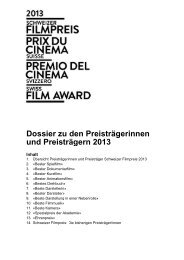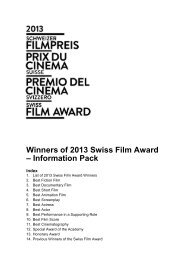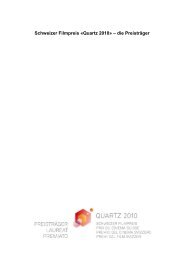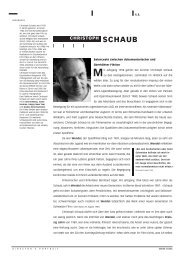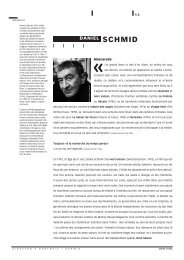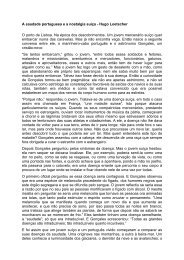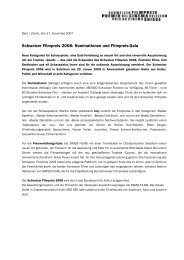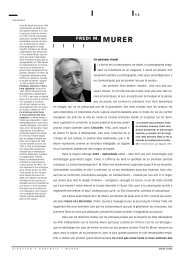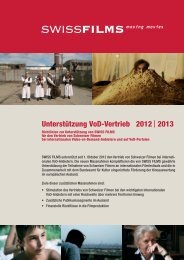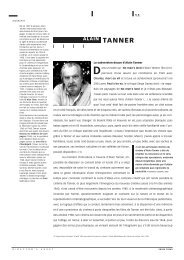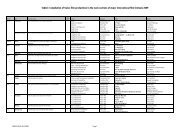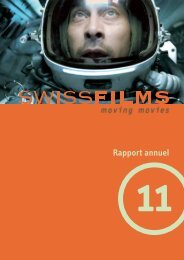Director's Portrait Fredi M. Murer - Swiss Films
Director's Portrait Fredi M. Murer - Swiss Films
Director's Portrait Fredi M. Murer - Swiss Films
You also want an ePaper? Increase the reach of your titles
YUMPU automatically turns print PDFs into web optimized ePapers that Google loves.
Script: <strong>Fredi</strong> M. <strong>Murer</strong><br />
Camera: <strong>Fredi</strong> M. <strong>Murer</strong><br />
“He shot <strong>Portrait</strong> of Bernhard<br />
Luginbühl as cinéma-direct, an<br />
extraordinary film about art and<br />
an artist – in this case, the wellknown<br />
Berne-based metal sculptor<br />
– which, by taking a wonderfully<br />
wry look at everyday comings and<br />
goings in the artist’s household,<br />
clearly reveals the full meaning of<br />
Luginbühl’s sculptural work.”<br />
Frankfurter Rundschau, 1967<br />
S H O R T F I L M / M U R E R<br />
Sound: <strong>Fredi</strong> M. <strong>Murer</strong><br />
Editing: <strong>Fredi</strong> M. <strong>Murer</strong><br />
1966 16 mm b/w 25’<br />
F<br />
Music: Irène Schweizer Quartet<br />
Production: <strong>Fredi</strong> M. <strong>Murer</strong><br />
World Rights: <strong>Fredi</strong> M. <strong>Murer</strong><br />
Original Version: IT<br />
BERNARD LUGINBÜHL<br />
redi M. <strong>Murer</strong> refers to his artist portraits as “duels” between himself and the people he is<br />
portraying. Berne-based sculptor Bernhard Luginbühl’s weapons are the felt-tip pen, iron,<br />
fire, hammer, a poker face with a smoking cigarette, and the family. <strong>Murer</strong> spent ten days living<br />
with the Luginbühls, and his film takes its structure from the evolution of a sculpture. Stylistically,<br />
Bernhard Luginbühl is a departure from <strong>Murer</strong>’s earlier works. Owing much, in photographic<br />
terms, to documentary realism, and with the music of jazz pianist Irène Schweizer’s quartet for<br />
its soundtrack, Bernhard Luginbühl has shades of cinema vérité. <strong>Murer</strong>, however, resented being<br />
lumped by the press into a cinematic genre, insisting that he didn’t make “cinéma vérité” but<br />
“cinéma privé”. This is true inasmuch as, in Bernhard Luginbühl, it is not so much a case of the<br />
work describing the artist as of the bosom of his ever-present family providing the inspiration for<br />
his work. “My eldest brother is a sculptor. In a way, he was always my role model: he was thirteen<br />
years older than me and – no matter what I did – always thirteen years better. Subconsciously, in<br />
making the film about Luginbühl, who is about the same age as my brother, I actually made a film<br />
about my brother and, in so doing, ‘caught him up’.” <strong>Fredi</strong> M. <strong>Murer</strong> in Kommunikation & Gesellschaft, 9, 1979, p.3<br />
SWISS FILMS



